When Antarctica went into the deep freeze
A member of the team looking at the top layer of sediment, deciding where best to sample to get different time intervals.
Bringing up a core of mud from 34 million years ago
After the core is brought up it is laid out for scientists to describe and take samples.
Extreme close up of the 35 million year old foram: Cribrohantkenina inflata. discovered in the cores from Tanzania. More images of these intricate forams can be seen in the 'Up close with Nature' gallery.
Scientists from Amgueddfa Cymru – National Museum Wales and Cardiff University have found new evidence of past climate change, which helps solve some of the mystery surrounding the appearance of the vast ice-sheet in Antarctica 34 million years ago.
Antarctica hasn't always been covered with ice – the continent lay over the south pole without freezing over for almost 100 million years. Then, about 34 million years ago, a dramatic shift in climate happened at the boundary between the Eocene and Oligocene epochs. The warm greenhouse climate, stable since the extinction of the dinosaurs, became dramatically colder, creating an "ice-house" at the poles that has continued to the present day.
Global cooling
Many climate scientists are involved in trying to figure out what caused this climate shift. This should tell us more about how the climate responds to major controls like changes in the Earth's orbit around the sun, and the concentration of greenhouse gases in the atmosphere.
Past climate changes can be recorded by studying tiny microfossils in layers of deep sea mud. Up until now, scientists found that the oceans appear to have warmed up during this big climatic shift. Their studies suggested that warming seemed to coincide with ice-sheets appearing in both Antarctica and the Arctic. This conflicting evidence, of warming seas while ice-sheets grew, doesn't fit in with computer simulations of the climate at the time; the computer models don't show ice to be present in the Arctic."
Tanzania drilling project
The solution to this icy puzzle has come from a surprising place – Tanzania in East Africa. The Tanzania Drilling Project team, including scientists from Amgueddfa Cymru and Cardiff University, have been recovering cores of ancient mud deposited on the seafloor millions of years ago (which has since been geologically uplifted into land).
The Tanzanian cores are special because large thicknesses of mud were laid down over a relatively short time, meaning that climate changes through time are seen in great detail. Also, beautifully preserved microfossils are found in the cores.
The Tanzanian cores provide the first really clear picture of how sea-level fall fits in with the climate shift.
Setting the record straight
The chemistry of the Tanzanian microfossils has been used to construct records of temperature and ice volume over the interval of the big climate switch. These new records show that the world's oceans did cool as the ice-sheets appeared, and that the volume of ice would have fitted onto Antarctica. So the computer simulations of climate and the past climate data now match up.
The focus now is to look for evidence of the ultimate cause of this global cooling. The prime suspect is a gradual reduction of CO2 in the atmosphere, combined with a 'trigger' time when Earth's orbit around the sun made Antarctic summers cold enough for ice to remain frozen all year round.
How it works
The shell chemistry of pin-head sized animals called forams can tell us how ocean temperatures changed through time. Forams are great tools for studying climates of the past, which helps us learn about the uncertainties of our future greenhouse climate.
1). Forams take chemical elements from the ocean into their shells, using more magnesium at warmer temperatures.
2). Dead forams fall to the sea floor and build up in layers of mud over millions of years.
3). Today, going down through the mud layers is like going back in time. If we can measure the magnesium content of forams going down through the mud, it gives us a record of how ocean temperature changed through time - more magnesium equals warmer temperature.
Further Reading
Lear, CH, Bailey, TR, Pearson, PN, Coxall, HK, Rosenthal, Y. Cooling and ice growth across the Eocene-Oligocene transition. Geology 36 (3), 251�254. 2008.
http://www.gsajournals.org/perlserv/?request=get-abstract&doi=10.1130%2FG24584A.1
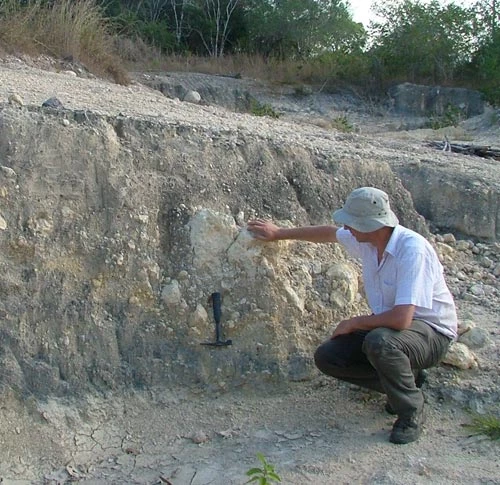
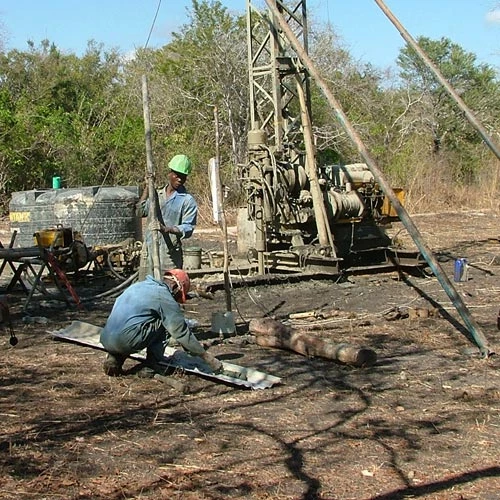
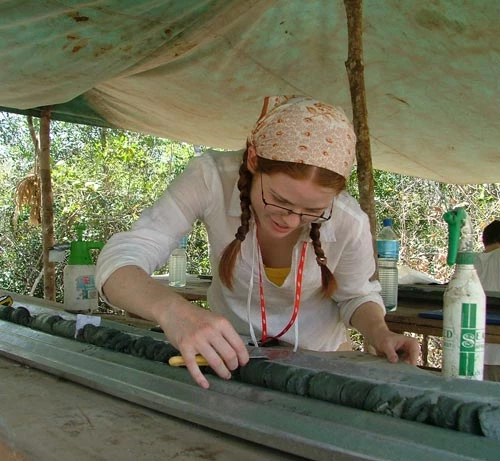
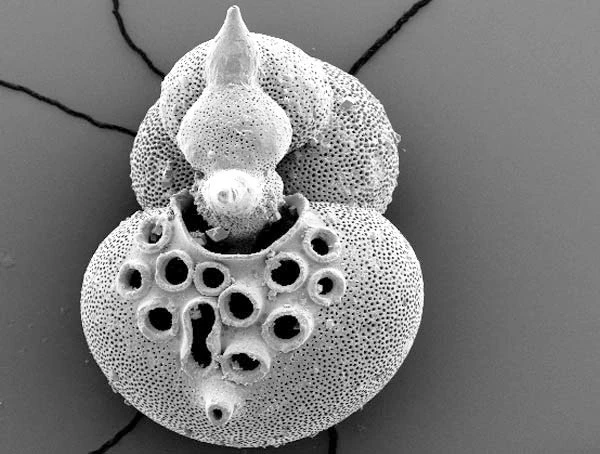
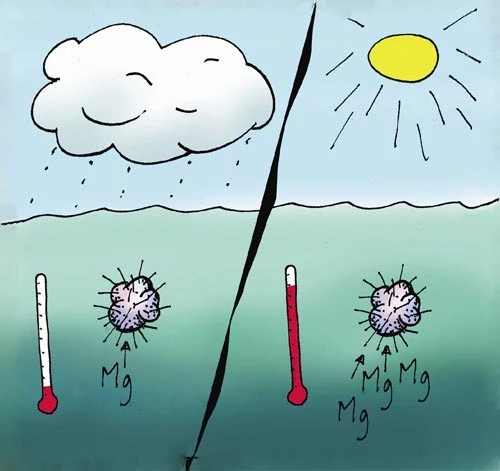
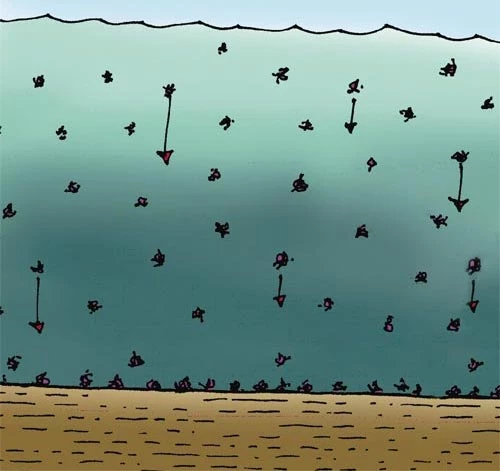
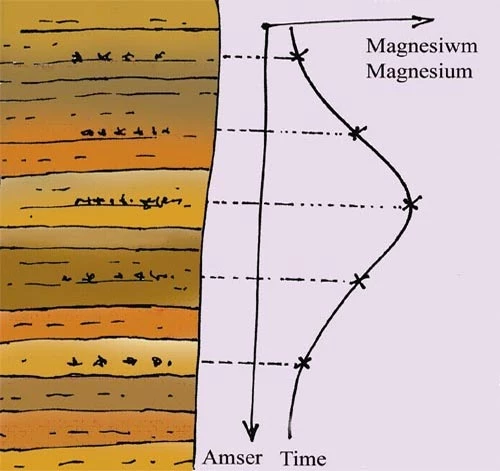
Comments - (8)
Hi Erik,
I'll discuss this with our curators and see when we can schedule time to produce an updated article.
Thanks for your comment
Sara
Digital Team
Hi Bryant,
We now think that the continent of Antarctica froze in two steps, with mountain glaciers appearing in the Late Eocene (approximately 40 million years ago), later reaching the sea in some locations.
Then at the Eocene-Oligocene boundary (approximately 34 million years ago) these glaciers expanded, joining up to form an ice-sheet covering the whole continent (reference).
At the North Pole, ice sheets have come and gone several times over the last 2.5 million years. Ice core studies show that the most recent ice advance began approximately 125,000 years ago and reached its maximum approximately 21,500 years ago.
On a much shorter timescale entirely, well preserved Mammoths with vegetation still frozen in their stomachs have been found in permafrost. This is the permanently frozen soil found underneath the soil layer that freezes each winter and thaws each summer. This happens in the tundra regions around the edges of the Arctic ice.
There are several ways in which the bodies of tundra animals could be deposited and preserved in the permafrost layer beneath, e.g. by falling into a bog / being buried by a winter snowstorm, but these finds can’t tell us how fast the ice grew further north.
Hi there Bryant,
Thanks for your question. I'll pass it on to one of our curators, and let you know what they say.
Sara
Digital Team